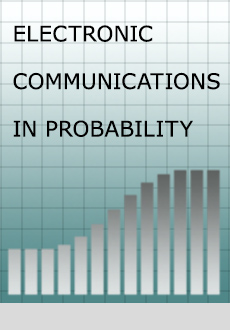Abstract
Ge and Štefankovič have recently introduced a Markov chain which, if rapidly mixing, would provide an efficientprocedure for sampling independent sets in a bipartite graph. Such a procedure would be a breakthrough because it would give an efficient randomised algorithm for approximately counting independent sets in a bipartite graph, which would in turn imply the existence of efficient approximation algorithms for a number of significant counting problems whose computational complexity is so far unresolved. Their Markov chain is based on a novel two-variable graph polynomial which, when specialised to a bipartite graph, and evaluated at the point (1/2,1), givesthe number of independent sets in the graph. The Markov chain is promising, in the sense that it overcomes the most obvious barrier to rapid mixing. However, we show here, by exhibiting a sequence of counterexamples, that its mixing timeis exponential in the size of the input when the input is chosen from a particular infinite family of bipartite graphs.
Citation
Leslie Goldberg. Mark Jerrum. "A counterexample to rapid mixing of the Ge-Štefankovič process." Electron. Commun. Probab. 17 1 - 6, 2012. https://doi.org/10.1214/ECP.v17-1712
Information





